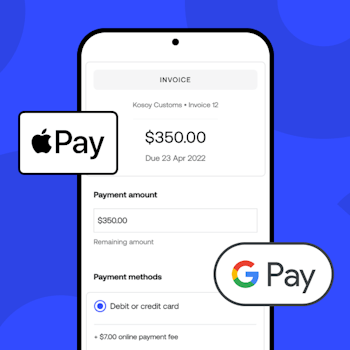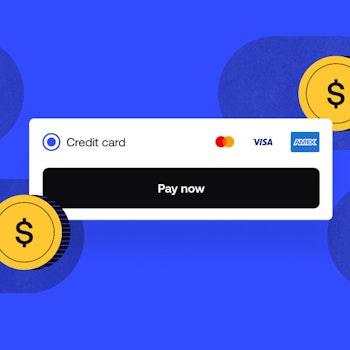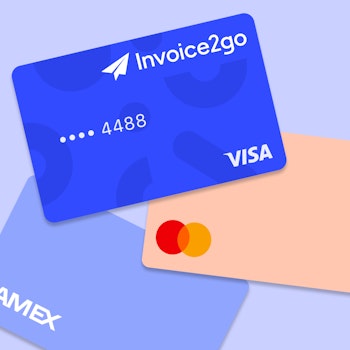
How to protect your small business against inflation
Inflation is soaring. In the US, the consumer price index – which measures the average change in consumer prices over time – rose 8.5% from March 2021 to March 2022, the fastest annual increase since December 1981, according to the Bureau of Labor Statistics. Inflation has also hit record highs in the UK, Australia, Pakistan, and many other countries around the world. Experts blame a plethora of factors, ranging from supply chain disruptions to rising oil prices made worse by Russia’s invasion of Ukraine.
The trend, viewed as a sign of even higher consumer prices around the corner, has already taken a toll on small business owners. When consumers have less purchasing power, it can decrease a company’s ability to expand – or simply stay afloat. Also, since small businesses are often financed by owners’ personal funds, financial risk increases with the inflation rate.
Many small business owners have responded to higher inflation with price hikes of their own. The National Federation of Independent Businesses’ Small Business Optimism Index found that 72% of business owners – the highest percentage in the survey’s history – raised their average prices in March 2022.
We’ve noticed a similar pattern here at Invoice2go, a Bill.com company. Since November 2021, we’ve seen around 15% year-over-year growth in total invoiced amounts. While this can mean that businesses are starting to recover in this inflationary environment, it also indicates they’re likely charging more for their services.
The good news is that when it comes to rising inflation, you’re not alone. And where there’s community, there’s strength. This article will cover recent trends, explain what causes inflation, and share 8 of our top tips to help you hedge against inflation as a small business owner.
Let’s dive in:
What’s driving inflation?
In economics, inflation refers to a prolonged increase in the prices of goods and services. Inflation erodes the purchasing power of currency. It’s the reason why a dollar could buy you considerably more 50 years ago than it can today.
In the short-term, these rising prices can occur when demand surpasses supply, like during an economic boom. If consumers have more to spend, they’ll likely buy more goods and services. Businesses, in turn, may raise prices because they don’t have enough supply to meet the increased demand, or because they know they can do so without losing customers.
An inflationary environment can also arise independent of the economic climate – for example, limited oil production can raise prices for gas, and supply chain disruptions can slow manufacturing.
In the US, both economic conditions and external factors seem to be at play, according to the New York Times. On the one hand, demand has surged. Now that the economy has reopened, consumers are eager to spend the money they’ve saved – bolstered by government stimulus checks – after months of lockdown.
At the same time, the pandemic has shuttered factories and snarled shipping routes, squeezing demand. Restrictions amid a spike in COVID cases in China, a crucial manufacturing hub, are poised to further disrupt the supply chain. Rising oil prices, which lead to rising gas prices, are also to blame, Vox points out. They were already on the upswing pre-pandemic, and Russia's invasion of Ukraine has only made matters worse. The resulting sanctions have driven up the price of wheat and other commodities, too.
The specific combination of contributing factors varies from one country to the next. For instance, not all countries experienced the economic recovery the US did, with consumers eager to spend extra cash, the World Bank notes. But rising commodity prices and demand, as well as supply chain issues, seem to be underlying inflation across countries, regardless of income level.
While the media tends to focus on the impacts on consumers, small businesses often have the greatest challenges with inflation. There can be a lack of access to funds since financial institutions often tighten borrowing requirements during periods of higher inflation. Small business owners can lose money due to rising supply costs compounded with clients being slow to pay their invoices due to their own financial struggles.
In times of sustained high inflation, small businesses often face a dilemma: Do they raise prices or absorb higher costs? Raising prices could ensure profitability, but it could also alienate customers. Finding the right solution for you can be a tightrope walk that requires careful consideration.
In some cases, it’s possible to avoid this conundrum with the inflation protection measures mentioned below.

Top 8 business strategies to protect against inflation
Since the way forward is still uncertain, coping with rising inflation will require some out-of-the-box thinking and a willingness to continue adapting.
These actionable tips will help you focus on the right things as you launch into the next leg of your journey.
1. Pay close attention to productivity
Having a clear business plan and focusing on ways to do more with less are great ways to reduce costs. If you still use many manual processes for daily tasks, like accounting, invoicing, or marketing, think about what you can do to improve efficiency.
Start by jotting down all the business processes you carry out each week. When you can chart out a process step-by-step, it’s easier to identify areas where you can make improvements. Take a good look at how you and any employees spend time each day. Even finding ways to save 3-5 hours per week can help you hedge against inflation.
2. Automate whenever possible
Process automation is fantastic – and it’s not just for big businesses. There are loads of apps that help you automate repetitive tasks, from basic bookkeeping to client care, marketing, and so much more. Chances are, you probably already use some of them. Are you taking full advantage of them?
If you can automate aspects of your daily work, do it. Automation reduces errors, streamlines processes, and improves customer service. As we all know, customers love fast, easy, and reliable things.
How do you know what processes to automate? If the task has few variables, is repeatable, and doesn’t take much decision-making brainpower, it’s probably a good choice.
Here are just a few of the business processes you can automate easily:
- Contract creation and renewals
- General ledger entries
- Purchase orders
- Invoices
- Collections
- Inventory
- Shipping
- Sales and marketing
If you’re an Invoice2go subscriber, we have many features to help you automate tasks like appointment setting, as well as time, expense, and invoice status tracking. Whatever services you use, look to take simple tasks off your plate whenever possible.
You may also want to consider a customer relationship management (CRM) program. They generally come loaded with a lot of automation options to help you increase productivity and grow your business.
3. Take a close look at your subscriptions and service contracts
Many organizations don’t think too much about their service contracts. However, there may be some low-hanging fruit to cut out unnecessary services or negotiate lower prices.
Remember, even saving $100 a month is $1,200 a year. It’s personal finance 101: You want to save more money so you can maintain a low expense ratio.
Here’s what to do:
- Pull all your service contracts — phone, internet, waste management, fuel, maintenance, equipment leases — anything you pay for on a contractual basis. Look at your service levels and what you’re paying for under each category.
- Once you understand all the costs, fees, and add-ons, go through them individually to look for any features you don’t use anymore and downgrade or cancel them. For instance, if you pay for an office space or coworking membership but only work from home these days, that’s an expense you can ditch.
- Learn about benchmark pricing for each service. Put together a spreadsheet with costs from different carriers. Then, negotiate costs with your suppliers.
- Look at switching to new cost-effective technologies when possible. For example, if you’re still using standard PBX phone lines, switching to a VoIP system will both reduce costs and give you more features.
4. Get real about your debt
Coming out of the pandemic slump has put many small businesses into massive debt. If you’ve taken advantage of all the stimulus packages you’re entitled to — and here’s a friendly reminder to apply for forgiveness where possible — use any residual funds to pay down high-interest debt now, especially as interest rates rise.
Indeed, central banks have started raising interest rates to help combat inflation. The US Federal Reserve foresees six more increases in interest rates in 2022, which could amount to a rate of 1.9% by the end of the year, according to CNBC.
Even if you can’t wipe out your debt completely, try to take a bite out of the principal amount while you can. Reducing how much you pay through lowering interest rates can help you protect against inflation.
Alternately, speak to your bank or credit union about renegotiating loans or lines of credit to lower interest rates. Then, take the money you save and hold it in reserve if inflationary pressures become an issue for you going forward. Working with a financial advisor or other personal finance expert can help you find the best strategy for you.
5. Revisit your pricing strategies
People will only pay what the market will bear, so it’s critical to ensure you’re pricing your services fairly during inflationary periods. Maintain your margins whenever possible, but sometimes raising prices isn’t viable.
As inflation rises, know what the competition is doing. Keep your ears to the ground in your industry, join LinkedIn groups related to your niche, and follow events and news that might impact your business model.
If you price yourself above the market for the sake of profit, you’re probably going to lose customers. A better approach would be to set your pricing and then figure out what you can do to optimize processes to lower costs throughout the organization.
6. Focus on cash flow
Cash flow is king, and it’s certainly one of the best inflation hedges. When business is slow, there’s a tendency to ignore certain things, like arbitrary spending, purchasing, and collections. On the spending side of things, take a pragmatic view of new purchases and the return on investment (ROI) they deliver.
As for your clients, sure, you want to cut them some slack—everybody’s feeling the crunch. But you can’t put your business at a disadvantage because of it.
Use reports to see what’s outstanding, then follow up on unpaid invoices and pending estimates to keep your business moving.
7. Lower your supply chain risk
To further hedge against inflation, CFOshare suggests keeping an eye out for tendencies that might make your small business more vulnerable to supply chain disruptions, such as:
- Over-reliance on single suppliers
- Overseas suppliers that require a long lead time
- Materials that are challenging or costly to store
- A single commodity representing more than 10% of cost of goods sold
To lower your supply chain risk, try the following:
- Create backup supply chains
- Search for domestic alternatives to overseas suppliers
- Stock up on core supplies with minimal storage costs
- Hedge commodities where appropriate
8. Lower your labor market risk
Inflation will likely impact low- and minimum-wage workers, 1099 contractors, and people in high-demand positions like software engineering, CFOshare predicts. If your business relies heavily on these jobs, creating an HR strategy to attract and retain talent is essential. Offer both raises and non-monetary support, like career development. Employees who show up for more than just a paycheck have a higher likelihood of sticking around amid inflation spikes.
Will inflation last?
Among the business owners who responded to the March 2022 Small Business Optimism Index, around 31% cited inflation as their biggest hurdle, and the percentage of those who expected better business conditions dropped to record-low levels. But Morgan Stanley, UBS, and Bank of America have a sunnier outlook – they predict inflation will start to level off through the end of the year as gas prices fall and supply chains groan back to life, Forbes reports.
As tough as it might be for small business owners, know that you can take steps to combat inflation. Plus, you can apply the lessons you learn now to future inflationary periods – while it might be the first time you’ve had to overcome this challenge, it probably won’t be the last. Basically, as an entrepreneur, you should learn to expect inflation.
Related Articles

How to accept credit card payments on Invoice2go in 3 simple steps

Accept payments online via Apple Pay and Google Pay

Must-not-miss write-offs as you wrap up 2022 year-end finances

5 ways accepting credit and debit card payments helps your business stay resilient

4 easy ways to increase cash flow today

What is Small Business Saturday and why is it important?
The features and surprising benefits of a well-designed packing slip
